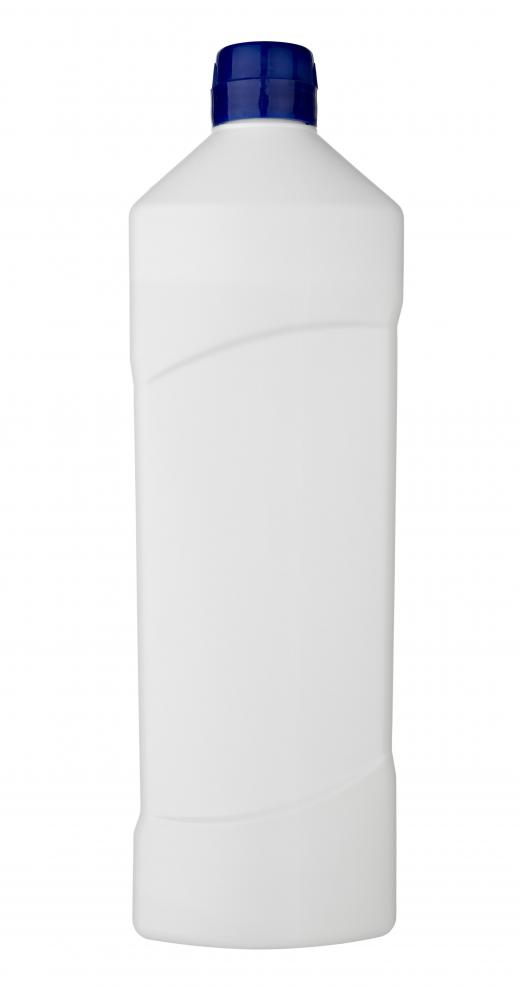What is Ammonia Used for?
 Michael Anissimov
Michael Anissimov
Ammonia, a chemical compound known for its pungent odor, is a fundamental component of all life forms. Ammonia consists of one nitrogen atom bonded to three hydrogen atoms, and serves as a crucial nitrogen carrier. Nitrogen is the fourth most abundant element in living organisms by weight, making up about 2.5% of body mass. Living things need nitrogen to live, but only a few microbes are capable of “fixing” the abundant atmospheric nitrogen (N2) into a non-volatile (non-gaseous or evaporating) form that works in the context of our body’s biochemistry. Nitrogen is a necessary component in the synthesis of amino acids, which make up all proteins in the body.
Aside from being central to life itself, nitrogen has many industrial uses, making it among the most synthesized inorganic chemicals. The most important use of ammonia is in the synthesis of nitric acid, an ingredient in fertilizers and explosives. Ammonia is produced in large quantities using the Haber process, an industrial process that fixes atmospheric nitrogen using extreme temperatures and pressures.

Prior to the invention of the Haber process by the German chemist Fritz Haber, all fertilizers had to be made from pre-existing nitrate deposits, such as the abundant guano deposits in South American caves or encrusted layers of bird droppings on Pacific islands. The advent of the Haber process made mass agriculture truly possible, permitting the existence of the great cities we see today. Furthermore, the entire nitrogen content of all manufactured organic compounds comes from ammonia. Worldwide ammonia production in 2004 was 109 million metric tonnes.

Prior to the invention of Freon in 1928, ammonia was a standard refrigerant. It still finds narrow uses in small refrigerators. Most modern home refrigerators use CFCs for refrigeration, but with the knowledge that these chemicals are dangerous to our ozone layer, ammonia use has picked up again, especially in industrial processes such as bulk ice making.

Sometimes ammonia is added to drinking water, along with chlorine, to form chloramine, a disinfectant. 5-10% solutions of ammonia are also used as a household cleaner, but should never be mixed with chlorine in this context, as a variety of carcinogenic and toxic gases are released.
As ammonia can be toxic at excessive levels in the bloodstream, our body has a technique to get rid of it – reduce it to the compound urea. Urea makes up most of the dry weight of our urine.
Ammonia can also be used as a fuel. Although it is not as powerful as other fuels, it leaves no soot, and this quality, along with others, led for it to be used in the experimental rocket plane, the X-15.
AS FEATURED ON:
AS FEATURED ON:













Discussion Comments
4. ammonia is NH3, while ammonium is NH4, there is a difference, and gaseous ammonia is very diffident to an aqueous solution, as the boiling point is quite low (-33.34 degrees Celsius),(so it is easier to keep it at room tempter than it is to convert it to a liquid).
Hi -- I desperately need some help with my chemistry homework, I'm dying here. We were supposed to choose a commonly used item and study its chemical content, so I went with ammonia since I already had an ammonia MSDS sheet from my dad's business, but now I'm totally confused about it.
First, is it ammonia or ammonium? Everything I read says different things. Also, why would you use ammonia gas versus aqueous ammonia in some situations? Are there pros and cons of different forms of the thing? I am super confused about this, so if anyone could help me out with a concise explanation of ammonia and its uses?
Thanks all.
Could you tell me a little more about why ammonia as a refrigerant fell out of fashion?
I recently was reading about older types of refrigerators (really boring, I know, but it was for a school paper) and it seems like using ammonia to cool refrigerators was super common, and then just stopped almost overnight.
Is there a reason for this? I mean, I'm sure there is a reason for this, but could you tell me more about the reason? If it was dangerous, for example, then wouldn't people have stopped using it together even in smaller refrigerators?
I would just really love any information you could give me about ammonia and refrigeration -- it's a surprisingly involved topic!
I have to say, I hate the smell of ammonia. My mom always kept a jug of ammonia around the house, (I don't know if it was the same thing as ammonia refrigerant, she just called it ammonia), and she used it a lot for cleaning.
She would swear by her ammonia for cleaning metals, especially chrome, and she would also use it on mirrors and windows.
Whenever I got sick and threw up, she would immediately come behind me with the ammonia (well, after taking care of me), and dowse the whole bathroom with ammonia to kill off any germs. So now every time I smell that strong ammonia smell, I always feel slightly nauseous.
That's why I could never work in a lab I think -- I'd start feeling nauseous every time I had to do an experiment with ammonia in a chemical formula!
Do you guys have things like that with smell too? Isn't it weird that something so little can stick with you after so many years?
have you ever known anyone to use an ammonia ampule therapeutically to aide in preventing someone from psychologically dissociating? Would it be potentially harmful?
Post your comments